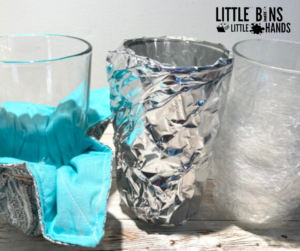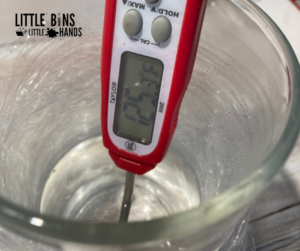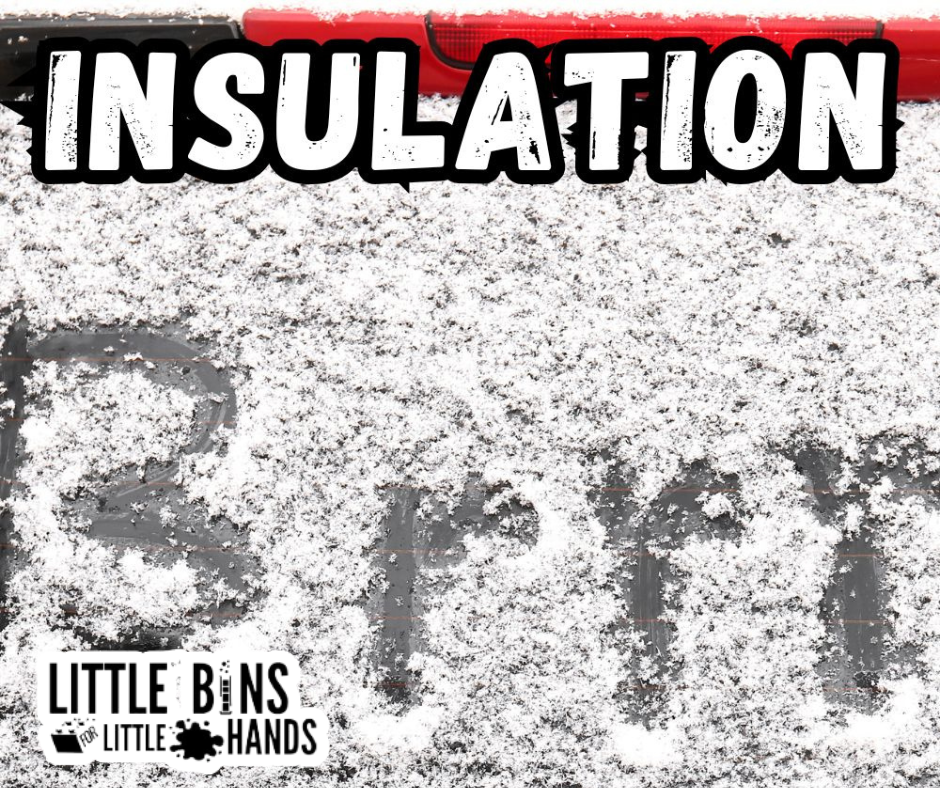This winter has been one of the coldest in recent history! These frigid temperatures are a great opportunity to learn about Insulation!
A simple definition for insulation is that it helps block heat from escaping, keeping things warm. To go into greater detail, insulation helps to reduce Conduction and Convection. Conduction is the transfer of heat through direct contact. If two objects are touching, heat will flow from the warmer object to the cooler object. Convection occurs when heat transfers through the movement of fuids, like liquid or gasses. Warmer fluids rise, while cooler fluids sink. If you have ever been in a 2-story house, you may notice that the upstairs is often warmer than the downstairs. This is because the warm air has risen to the top of the building, while the cold air has stayed on the bottom.
Different types of materials insulate in different ways. Some trap air, and others reflect heat. This simple experiment is designed to help you and your child explore different insulation materials to determine which one works the best!
 Here’s what you’ll need:
Here’s what you’ll need:
- Hot water (***Make sure to supervise any use of hot water***)
- Four glasses or mugs
- Different insulation materials (Choose materials you already have at home. Examples include wool, aluminum foil, cotton, plastic wrap, foam, bubble wrap, etc.)
- Thermometer
- Stopwatch or timer (Remember most smart phones, ovens, and microwaves have timers.)
- Paper and pencil/pen
Wrap each cup with a different insulation material. Heat your water in a kettle or microwave, then add the same amount of water to each cup. ***Hot water can cause burns; please make sure to supervise your little one while using dangerous materials.***
 Immediately use your thermometer to measure the starting temperature of the water in each cup. Make a chart for each material using your paper and pencil, and record the starting temperature. Ask your child to predict (or hypothesize) which material will help the water stay warm the best.
Immediately use your thermometer to measure the starting temperature of the water in each cup. Make a chart for each material using your paper and pencil, and record the starting temperature. Ask your child to predict (or hypothesize) which material will help the water stay warm the best.
For the next 20-30 minutes, check the temperature in each cup at regular intervals (every 3-5 minutes) and record the temperatures on your chart. Let’s look at the results. Was your child’s hypothesis correct, or did another material end up being the best insulator? Are there other materials in your home that you want to test out? Change out the insulators on your cups, make a new hypothesis, and start again!
As always, be as creative as you want, and above all, have lots of fun learning together!
We’ll see you right back here next Saturday for another STEAM Saturday activity! Scroll through the rest of our website to learn how Critchlow Adkins is Building Brighter Futures for the children and families we serve!








